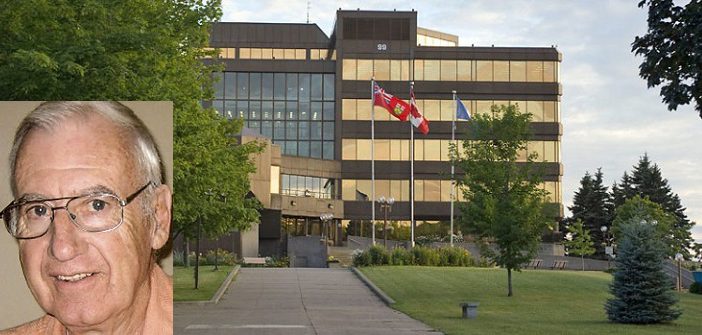This, of course, is anathema to those in the sign business, who see their businesses being hurt badly if such a move were ever to come about.
I agree with Tourism Sault Ste. Marie in regard to the aesthetics of the signs. They are butt ugly.
But on the other hand, I don’t like to see a local business hurt.
So is it possible that there is something that could be done that would satisfy both parties?
Such as making the signs passably aesthetically pleasing?
To me what makes the signs so ugly is mainly the platform rather than the sign. The spindly legs that hold it up are indeed an eyesore.
Would it be possible to drop some kind of box over these unsightly legs to make the sign appear as if it were permanent? Would it also be possible to dress up the frame around the sign a bit?
I spent some time sifting through websites on the Internet looking for some sign business that may have done this but I didn’t come up with anything that showed this has ever been tried.
Maybe it is time it was.
Prior to council voting Monday night to move ahead with a new sign bylaw, Rory Ring, chief executive officer of the Chamber of Commerce, suggested that council stay with the existing bylaw covering portable signs for a period to two years so a committee could be formed of all affected parties to look at the economic effect of any change.
But the new bylaw was three years in the making, with plenty of consultation along the way. Any committee formed would be simply going over plowed ground.
Actually, I don’t think the new bylaw will be as harmful to those in the sign business as they believe, but if they want to improve their lot I think they should look at improving the appearance of the signs.
The reason Tourism Sault Ste. Marie and many residents of this city don’t like them is that they are ugly.
If some moves had been made in this direction already, then we probably wouldn’t be having this conversation.
*****
In an interview with Elaine Della-Mattia of The Sault Star, Ontario’s Minister of Transportation said connecting link funding is not based on whether traffic on that roadway is local or transient.Instead, he said, applications are assessed based on a number of factors including the condition of the infrastructure and the need in the community, among other things.
“The notion of whether the traffic is local or non local shouldn’t have a bearing on whether it qualifies for connecting link funding because connecting link is defined in a particular way. It’s not a subjective definition,” said Steven DelDuca, Ontario’s Minister of Transportation.
Della-Mattia took this to mean that the door is open for the city to consider reapplying for the funding for what it has called its priority project – the widening of Black Road.
I hope she’s right.
As I said in a column in September, I do not understand the province’s reluctance to provide link funding so that the Black Road portion of the highway can be widened from two lanes to four.
After all, I said then, that two-kilometre stretch running between McNabb Street and Second Line is the only part of Highway 17 that runs through the city that remains two lanes.
MTO conducted a study in the Sault during the summer of 2013 to determine travel patterns for vehicles entering and exiting the city to assist it in planning for what it referred to as “future improvements to Highway 17.”
“The study found that the majority of vehicles entering the city represented commuting trips, rather than long-distance travel,” Eric Doidge, regional director of the MTO, said in a letter to then CAO Joe Fratesi. “Consequently only a small percentage of highway traffic (16%) would utilize a future Highway 17 bypass.”
He said results of an examination of Highway 17 through the city suggested the existing route is operating at an acceptable level. Although congestion is starting to occur at main intersections during peak hours, he said based on growth projections the existing route will continue to operate at an acceptable level for the next 20 years.
“Based on these results the ministry has decided not to start route planning and environmental assessment studies for a new route of Highway 17 at this time,” Doidge wrote. “The ministry plans to conduct similar studies in approximately 10 years.”
I considered this a crock then and I consider it a crock now.
Since the province has put off any plans for bringing the bypass through the Rankin Reserve to Second Line, Black Road will be in use as part of Highway 17 as well as a city street for probably at least 20 years.
I think that should be enough to get some action out of the ministry.
As it if were news, DelBuca told Della-Mattia that there have been more applications submitted than there is money available.
I doubt anyone would have thought otherwise.
I simply believe that since both ends of the portion of Black Road at issue already have been widened, it only makes sense to complete the job, making Highway 17 at least four lanes throughout the city.
However, having said that, I will admit that I realize the words “making sense” may not mean the same to a politician as they do to me.
Doug Millroy can be reached at dmillroy@gmail.com.


